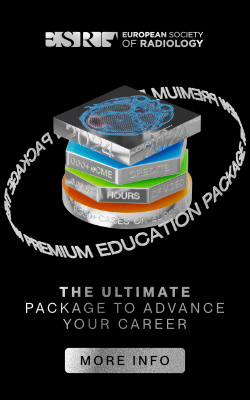Materials and Methods
Phantom and Scan setup
An anthropomorphic pediatric dosimetry phantom simulating a 5-year old child was imaged separately using vendor-specific protocols for head CT and thoracoabdominal CT. Multiple dosimeters were placed in different organs for both body regions (Fig.1). A scout image was acquired in lateral orientation in head CT and in anteroposterior orientation in thoracoabdominal CT.
The phantom was manually centered and imaged repeatedly at multiple vertical off-center positions (from -6 cm to + 6 cm compared to the 0-position). In head CT, the dosimeter at the thyroid was excluded from the scan range and served as a surrogate for scatter radiation.
Assessment of tube current modulation, image noise, and organ dose
The mean tube current time product (TCTP), image noise, and organ radiation doses were measured as a function of patient position. To estimate the effect of the bowtie filter alone, the measured organ doses were normalized to the mean TCTP and the measured image noises were normalized to the mean organ doses.
Statistical analysis
Regression analysis was applied to assess the relation between patient off-centering and organ dose. A linear regression model was fitted for head CT and a quadratic polynomial non-linear model for thoracoabdominal CT. Normality test of residuals for the non-linear regression was performed using the Shapiro-Wilk test.
Results
Impact of patient position on ATCM
In head CT, we observed two ranges of approximately constant TCTP between -6 cm to 0 cm and between +2 to +6 cm with a step-wise increase in-between (Fig. 2). By reviewing the lateral scout images, we observed that parts of the table with higher attenuation were absent or only partly present in the scout image at lower table positions (-6 cm to 0 cm) but fully present at higher table positions (+2 cm to +6 cm) (Fig. 3). The additional attenuating structures of the scanner table, therefore, increased the overall measured attenuation in the scout image which resulted in higher TCTPs.
Impact of patient position on organ dose and image noise
Organ doses differed up to 22% for the supratentorial brain, 34% for the infratentorial brain, 19% for the eyes, 28% for the lungs, 25% for the stomach, and 22% for the liver compared to the 0-position.
In head CT, regression analysis revealed that the radiation dose to the eyes decreased linearly and to the brain increased linearly with increasing table height (Fig. 4). Scatter radiation (measured at the thyroid) did not show a significant dependency on patient position and demonstrated a maximum increase of 9.7% compared to the 0-position (P=0.21). After normalizing the organ dose to the mean TCTP, the relation between organ doses and patient vertical position remained unchanged (Fig. 5). The relation between image noise and patient position was approximately linear but inverse to the relation found for organ dose. Depending on off-centering, image noise per mGy ranged from 0.12 HU/mGy to 0.23 HU/mGy for the supratentorial brain, 0.14 HU/mGy to 0.3 HU/mGy for the infratentorial brain, 0.07 HU/mGy to 0.15 HU/mGy for the eyes.
In thoracoabdominal CT, regression analysis demonstrated an approximately quadratic relation of organ dose to patient position, with highest doses measured at the 0-position and decreasing doses with increasing off-centering to lower or higher positions (Fig. 6). After normalization, the relative dose differences at different patient positions were affected stronger compared to head CT (Fig. 7). The relation between image noise and patient position was approximately quadratic but inverse to the relation found for organ dose. Depending on off-centering, image noise per mGy ranged from 2.2 HU/mGy to 3.4 HU/mGy for the thyroid, 2 HU/mGy to 3 HU/mGy for the right lung, 2 HU/mGy to 3.4 HU/mGy for the left lung, 2.4 HU/mGy to 4.4 HU/mGy for the stomach, and 2.4 HU/mGy to 4.1 HU/mGy for the liver.








